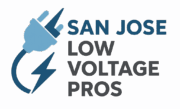Is 50V Considered Low Voltage?
Introduction
When people hear “50 volts,” many assume it’s harmless—after all, it’s far lower than the 120V or 240V powering homes. But in electrical engineering, classification of voltage is standardized by organizations like the IEC, OSHA, and NFPA. These definitions determine how voltages are regulated, what equipment is required, and how safety is enforced.
So, is 50V considered low voltage? The answer: Yes—but with some nuance.
In this article, we’ll break down what 50V means in terms of classification, safety, applications, and common misconceptions.
If you’re looking for expert low voltage solutions, San Jose Low Voltage Pros provides professional installation and support.
Table of Contents
- What Do Standards Say About 50V?
- How 50V Fits in Voltage Classifications
- Safety Risks at 50V
- Applications of 50V Systems
- Common Misconceptions About 50V
- Future Role of 50V in Technology
- Conclusion
- FAQs
What Do Standards Say About 50V?
According to the International Electrotechnical Commission (IEC 60038):
- Low voltage (LV): 50–1,000V AC, 120–1,500V DC
- Extra-low voltage (ELV): Below 50V AC or 120V DC
This means 50V AC is the threshold—right at the starting point of “low voltage” rather than “extra-low voltage.”
Other standards also mention 50V:
- OSHA (U.S.): Voltages below 50V are generally not considered hazardous under normal dry conditions.
- NFPA 70 (National Electrical Code): Uses 50V as a boundary in defining circuit classes.
- EU Low Voltage Directive (2014/35/EU): Covers voltages starting at 50V AC, meaning 50V equipment falls under safety regulation.
👉 Conclusion: By international definitions, 50V is considered low voltage, but it also marks the line where safety regulations become stricter.
How 50V Fits in Voltage Classifications
| Classification | Voltage Range | Example Uses |
|---|---|---|
| Extra-Low Voltage (ELV) | <50V AC / <120V DC | Doorbells, USB chargers, LED lighting |
| Low Voltage (LV) | 50–1,000V AC / 120–1,500V DC | Home wiring, appliances, HVAC systems |
| Medium Voltage (MV) | 1kV–35kV | Industrial distribution, substations |
| High Voltage (HV) | >35kV | Transmission lines |
So, 50V AC is the first step into low voltage.
Safety Risks at 50V
While 50V is “low voltage” by standard, that doesn’t mean it’s always safe.
Risks include:
- Electric shock: The human body can experience muscle contraction and pain starting at ~30V under certain conditions.
- Wet conditions: Even 50V can be fatal if skin resistance is reduced (e.g., sweat, immersion).
- Fault conditions: Poor grounding or damaged insulation can increase danger.
Safety guidelines:
- OSHA: Below 50V is “generally safe,” but 50V and above requires protective measures.
- NEC: Circuits 50V or higher must follow stricter installation rules.
- IEC: Treats 50V as the regulated threshold for low voltage.
Applications of 50V Systems
Despite being on the edge of low voltage, 50V is used in many industries:
- Telecommunications: 48V DC is standard for telecom power supplies and data centers.
- Renewable energy: Solar panel strings often operate around 50V DC.
- Automotive: Some hybrid/electric vehicles use 48–50V battery systems.
- LED lighting & control systems: Many run at 48–50V DC.
- Industrial controls: Machines use 48–50V for sensors, signaling, and control circuits.
👉 This makes 50V a sweet spot—low enough for efficiency and equipment safety, but high enough for reliable power delivery.
Common Misconceptions About 50V
- “50V is harmless.”
❌ False. Under dry skin conditions it’s often survivable, but in wet environments it can be deadly. - “Only high voltages are regulated.”
❌ False. Many regulations start exactly at 50V. - “50V is always DC.”
❌ False. Both AC (mains threshold) and DC (telecom, EV) use 50V systems.
Future Role of 50V in Technology
The world is moving toward low-voltage DC systems, and 48–50V is emerging as a global standard.
- Data Centers: Shifting from 12V to 48V for efficiency.
- EVs: Mild hybrid cars rely on 48V systems for fuel savings.
- Smart buildings: Increasing adoption of DC microgrids running at ~50V.
This means 50V will play a central role in powering future infrastructure.
While 50V is generally classified as low voltage, higher levels such as 240V fall into different categories depending on standards.
Conclusion
So, is 50V considered low voltage?
✅ Yes. 50V AC is the lowest limit of low voltage according to IEC, OSHA, NEC, and EU standards.
⚠️ But while “low voltage” sounds safe, 50V can still cause harm under certain conditions.
From powering telecom networks and solar panels to enabling the rise of EVs and smart buildings, 50V is not only low voltage—it’s also a critical foundation of modern technology.
